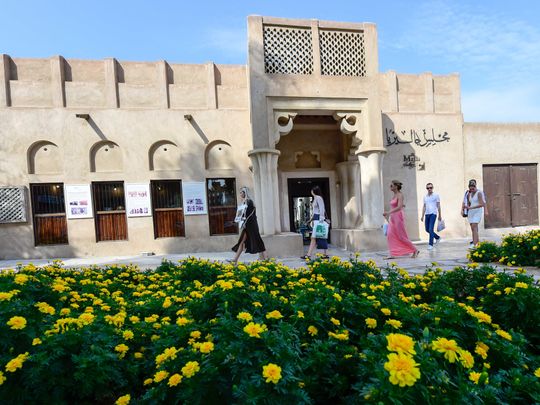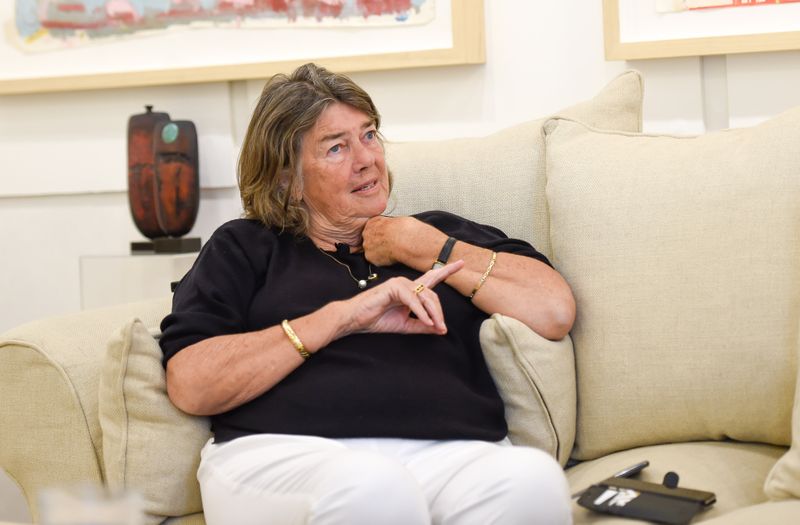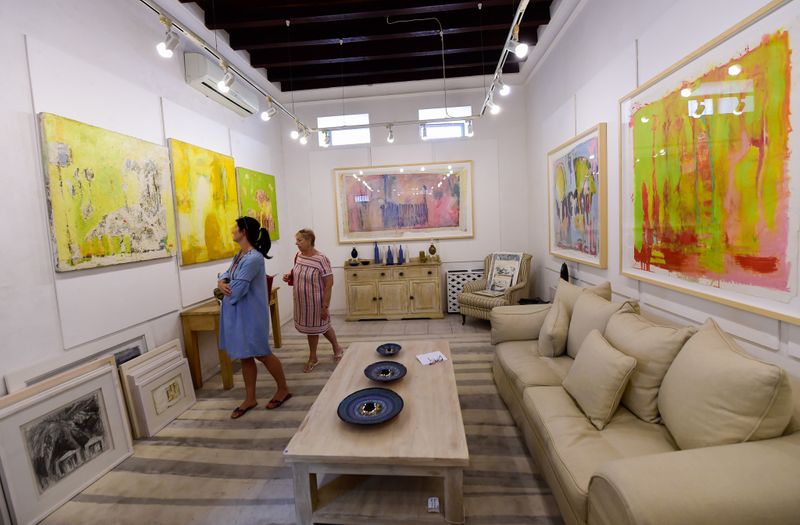Dubai’s iconic Majlis Gallery to close down
[ad_1]

Image Credit: Virendra Saklani/Gulf News
Dubai: In what many would perceive as the end of an era, the landmark Majlis Gallery in Bur Dubai’s Al Fahidi neighbourhood is closing down, Gulf News can reveal.
But ask Alison Collins, the founder of the 40-year-old absorbing art house, and there is no remorse.

Image Credit: Virendra Saklani/Gulf News
“Nothing goes on forever,” she told Gulf News on Monday. “Life is full of beginnings and endings. The important thing is to be in control of the ending. I am winding up the gallery by the end of October with wonderful memories and experiences, without any regrets whatsoever.”
Regarded as a slice of precious history in an increasingly modern landscape, the Majlis Gallery had striven to preserve its old world charm. But Alison said with funds depleting, things had been building towards a closure for the past eight years. “The pandemic was just the last straw on the camel’s back,” she added.
Alison noted that the art market in the UAE had phenomenally changed over the years. “We had become an institution which people loved to visit. We became a big tourist attraction and were no longer playing the role of the commercial art gallery that we were at one time. We tried to do pop-ups elsewhere to survive, but it wasn’t the same thing.”
Swan song sale
As the Majlis Gallery shuts the doors of the tenanted Villa No. 52 with its iconic single wind tower, reminiscent of the days when they were used to cool homes before the advent of air-conditioning and electricity in the UAE, Alison said she is planning on holding a “swan song sale” ahead of its closure.
“The sale will be from September 26 to October 16 and everything in the gallery will be sold at at least half-price. We have on board 60 artists, 50 of whose works will be available at the sale,” said Alison.
How it all began
In a throwback in November last year, when the gallery celebrated its 40th anniversary, Alison had talked of how she started the Majlis Gallery as an informal concept at the villa where she had moved into with her husband and first-born in 1978.
She said the famous British painter Julian Barrow had knocked on her door, asking if she could help sell his paintings.

Image Credit: Virendra Saklani/Gulf News
“In November 1979, I agreed to display paintings on the majlis walls by moving the furniture into the open courtyard. I even handwrote invitations and passed them on to friends. The exhibition ended up being a complete sell-out.”
Thus was born the Majlis Gallery as a homely, informal concept. The villa served as Alison’s residence for the next 10 years during which she raised three young children and hosted many informal soirees, introducing artists, both professional and amateur, to the local community.
It was also a time when her children would play with lion cubs, deer and falcons under the still-intact henna tree in the courtyard as residents sometimes brought them home for consultation with her husband who was a veterinary surgeon.
Pad for artists
But as the vagaries of time took their toll, the family received an eviction order in 1988 and was forced to move out of the villa. Buildings in the area were being demolished to make way for newer constructions.
As luck would have it, the landlord called them back within a year. But this time, Alison, who had settled into her new home in Al Safa, decided to lease out the villa as a commercial gallery space. And that was when Majlis Gallery became a limited liability company.
Over the years, the Majlis Gallery nurtured art and a community around it. Like Dubai itself, the gallery became a pad for artists from all over the world.
“I encouraged this and even started an Artists in Residence programme so they could come stay here, explore the desert and hold solo or joint exhibitions of their resultant works,” said Alison, referring to them as the “New Orientalists”.
As she pointed out, paintings by the early Orientalists who travelled far and wide and recorded the sights of the Levant, the Middle East and Far East in the pre-photography era, went on to gain much historical importance. The paintings included those from “before the camel track moved down the Al Ain road, before the souk and the Bastakiya were restored, when Jumeirah Beach was wild and goats roamed the streets of Bur Dubai … These artists are just another chapter in the long tradition of Orientalism and in time will be equally collectable”.
According to Alison, the documentation of the UAE’s evolution by the New Orientalists is extra special. “With time, their works will be very valuable. Reason: They are unique travelogues that portray the visual beauty and cultural intensity of this area to the entire world.”
When Alison shuts shop, she said she herself plans to spend more time in Europe, carrying with her rich accounts of the UAE, which she has called home for over four decades.
[ad_2]
Source link

